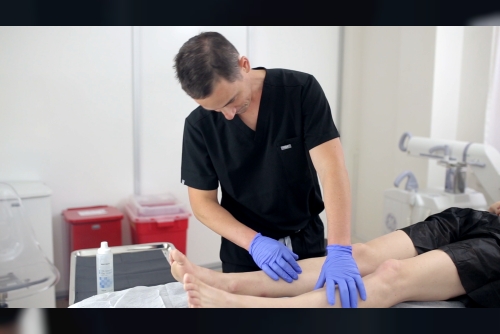Introduction
Many people start wondering by thinking about those bulgy, twisted and enlarged veins. Because they look weird and tidy in appearance, thus it creates a cosmetic problem for many people. Sometimes, many people get confused about when to see a vascular doctor for vein-related problems. If they found pain, swollen legs, heaviness, redness and itching in the affected area. This is a time to consult with a vein specialist immediately. The worsening part is that vein diseases can sometimes affect many people's daily functioning activities and quality of life. You will be lucky enough; different options are available to alleviate and manage these symptoms. In this article, we are discussing common treatments for vein disease.
Compression Therapy
Compression therapy involves a customised stocking in which the legs get gentle pressure, improving the flow of blood circulation. Compression therapy is often recommended as a prophylactic intervention for those who are suffering from mild to moderate vein issues.
Lifestyle Changes
Small lifestyle changes, such as maintaining weight and performing physical workouts (swimming, cycling and brisk walking), improve vein issues at certain levels. Moreover, avoiding sitting or standing for prolonged hours in one place helps to alleviate vein-related problems to a certain extent. You can also ease your discomfort and pain by elevating your legs in your free time, which can positively impact and improve your quality of life.
SclerotherapySpider veins and smaller varicose veins can be cured by sclerotherapy, a minimally invasive vein treatment procedure. In this process, the affected veins are directly injected with a unique (medical) solution, which gradually collapses and fades away vein symptoms. Sclerotherapy is an outpatient treatment that is generally well-tolerated and contains minimal to no recovery period.
Endovenous Laser Treatment (EVLT)
Endovenous Laser Treatment (EVLT) is a modern and effective method for curing large varicose veins. Laser technology directly focuses on the affected area and seals off the affected and punctured veins. This outpatient procedure has zero minimal discomforts and a faster recovery than traditional surgical treatments.
Radiofrequency Ablation (RFA)
Radiofrequency Ablation (RFA) is more or less like an EVLT and comes under a minimally invasive procedure often used to treat large veins. In this procedure, radiofrequency energy is applied directly to the affected region by using a catheter, causing the vein to collapse and seal. This vein treatment has a record of high success rates, and patients don't feel any discomfort during and after the procedure.
Vein Stripping and LigationVein Stripping and Ligation vein treatment is often used to cure larger veins and is recommended by vein specialists in severe cases only. This traditional surgical procedure involves small incisions to remove or tie off veins, which can effectively resolve advanced vein issues despite a longer recovery period.
Wrapping It UpVein disease is a common condition that affects people of all ages, thus impacting their daily routine lives. When affected people go to seek professional advice, they generally ask what are the treatment options for varicose veins? You will be lucky enough to get to know that there are different vein treatments, from minimally invasive to surgical interventions
to get rid of the difficult conditions.












 Boost your website conversion rate with UX Design
Boost your website conversion rate with UX Design



